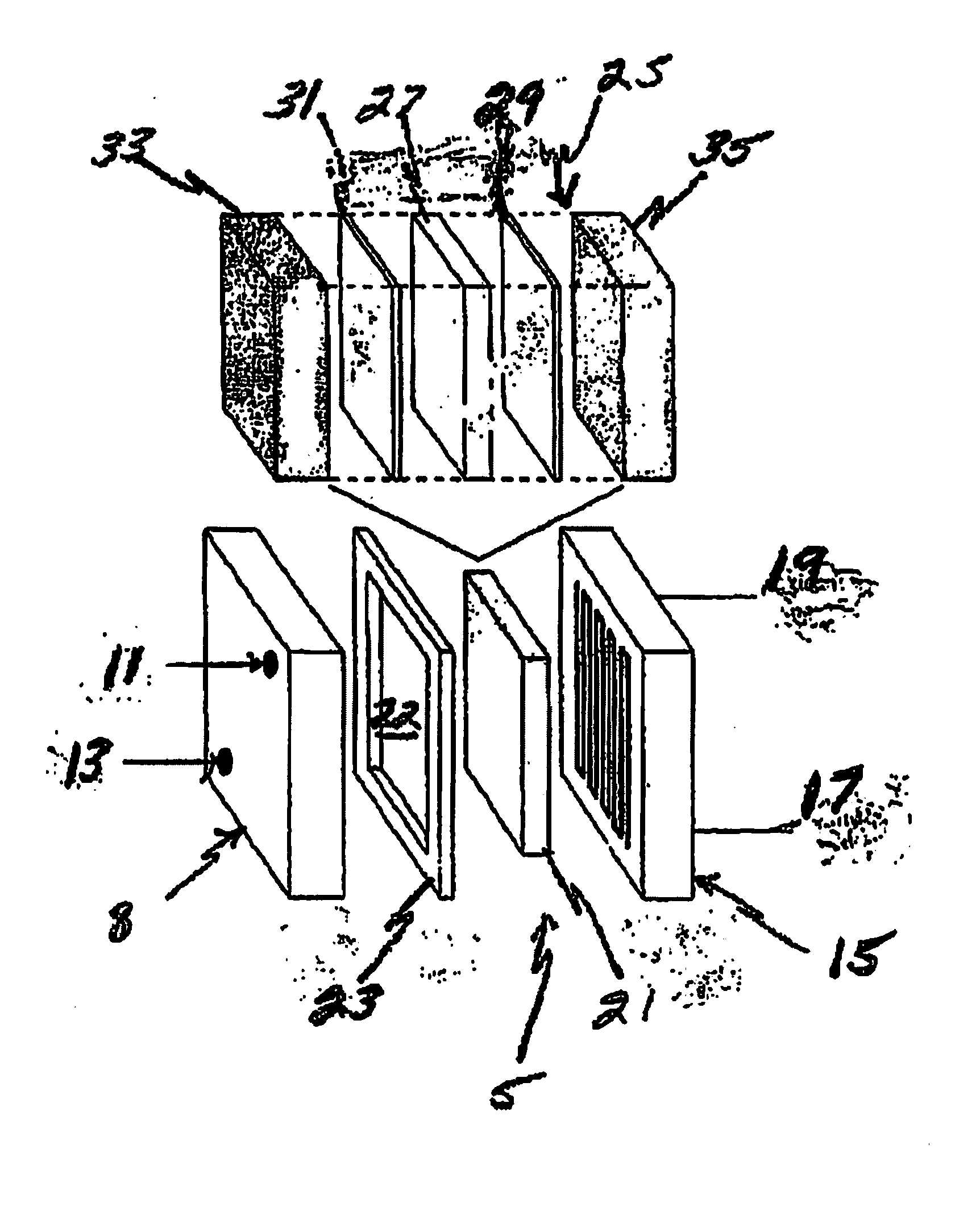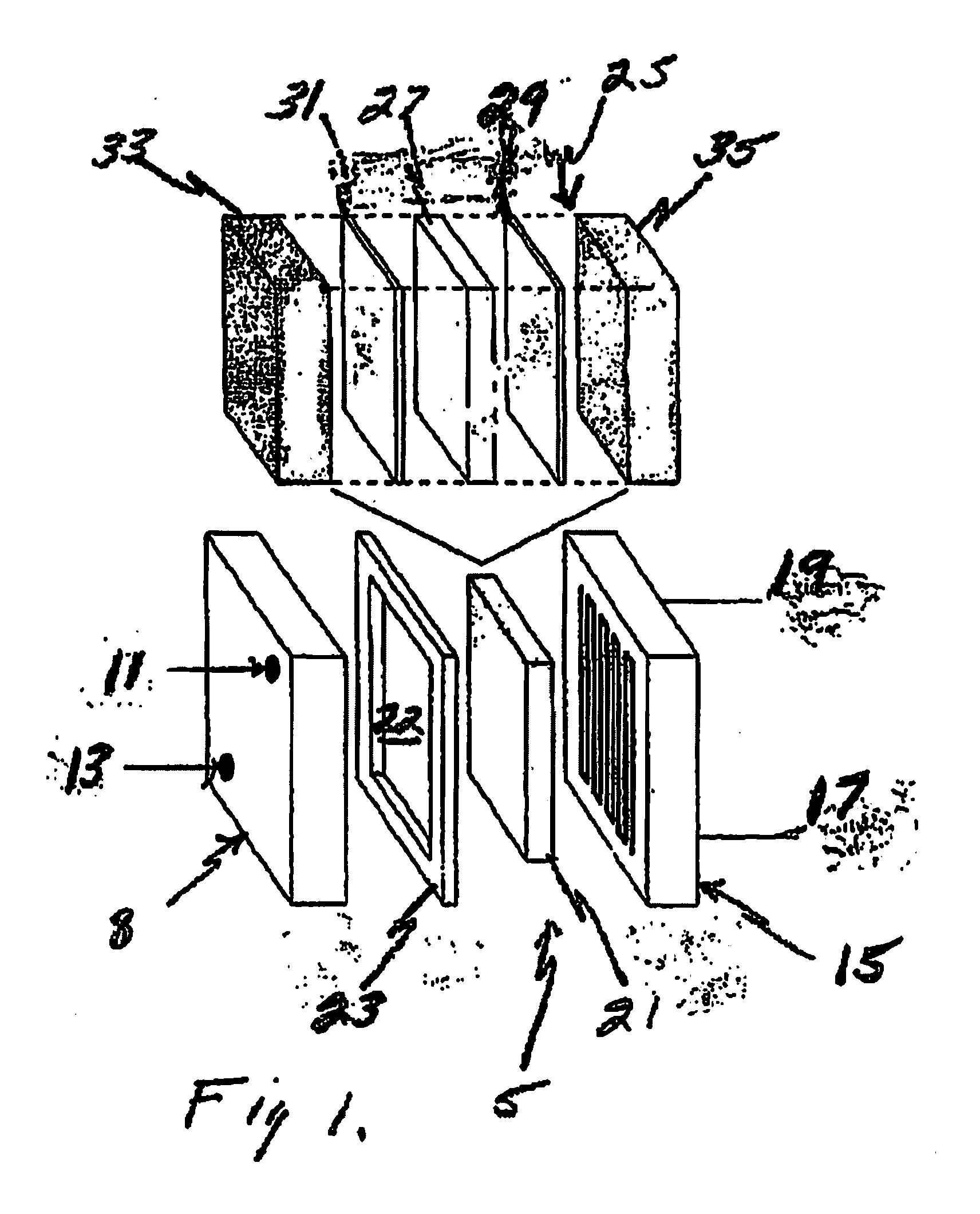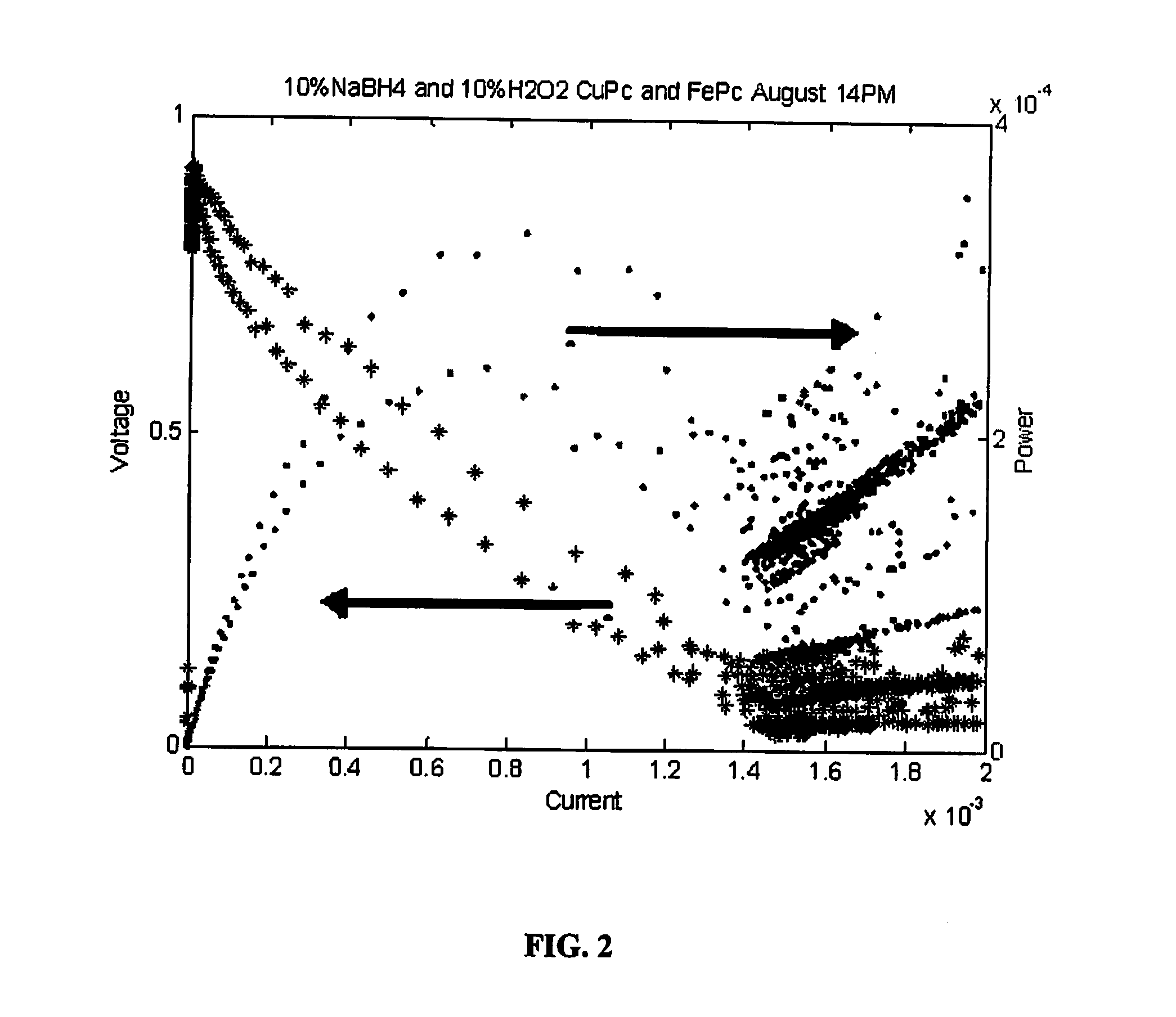Electrocatalyst Composition And Fuel Cell Containing Same
a technology of electrochemical composition and fuel cell, which is applied in the direction of cell components, carbon-silicon compound conductors, electrochemical generators, etc., can solve the problems of loss of electrochemical activity, severe retardation of platinum catalyst reaction kinetics, and cost of electrochemical reactions of platinum metal, etc., to achieve the effect of high efficiency, low cost and high efficiency
- Summary
- Abstract
- Description
- Claims
- Application Information
AI Technical Summary
Benefits of technology
Problems solved by technology
Method used
Image
Examples
example 1
4 by 4 Inch Fuel Cell
[0082]A 4.0 inch by 4.0 inch fuel cell was constructed with a cathode opposite an anode, and a membrane electrode assembly disposed between the cathode and anode. The cathode and anode are made up of graphite plates approximately one-inch thick with a machined serpentine flow path on one side of the plate.
[0083]The fuel cell membrane electrode assembly was composed of a first current collector with a second current collector disposed opposite the first, both being made from a porous carbon paper having a thickness of 0.005 inch, and a proton transfer membrane 0.002 inch thick NAFION® was disposed between the first and second current collectors. An electrocatalyst layer ranging in thickness between 0.0005 and 0.002 inches was disposed on the current collector and adjacent to the proton transfer membrane.
[0084]This electrocatalyst layer was comprised of electrically conductive particles in a mixture of carbon black, activated carbon, and graphite. The catalysts we...
example 2
3 by 6.5 Inch Fuel Cell Stack
[0088]A 3.0 inch by 6.5 inch fuel cell was constructed with a cathode opposite an anode, and a membrane electrode assembly disposed between the cathode and anode. Twelve (12) of these cells were positioned back to back to make up an entire fuel cell stack. The cathode and anode were made of graphite plates approximately 0.25 inches in thickness with a machined serpentine flow path on one side of the plate.
[0089]The fuel cell membrane electrode assembly was comprised of a first current collector with a second current collector disposed opposite the first, both being made from a porous carbon paper with a 0.005 inch thickness, and a proton transfer membrane 0.002 inch thick NAFION® was disposed between the first and second current collectors. An electrocatalyst layer between 0.0005 and 0.002 inches in thickness was disposed on the current collector adjacent to the proton transfer membrane.
[0090]This electrocatalyst layer was comprised of electrically condu...
example 3
3 by 6.5 Inch Fuel Cell Stack
[0095]A 3.0 by 6.5 inch fuel cell was constructed with a cathode opposite an anode, and a membrane electrode assembly disposed between the cathode and anode. Twelve (12) of these cells were positioned back to back, anode side to cathode side, to form an entire fuel cell stack. The cathode and anode were made of graphite plates approximately 0.25 inches thick with a machined serpentine flow path on one side of the plate.
[0096]The fuel cell membrane electrode assembly was comprised of a first current collector with a second current collector disposed opposite the first, both being made from a porous carbon paper having a thickness of 0.005 inches, and a proton transfer membrane of 0.002 inch thick NAFION® was disposed between the first and second current collectors. An electrocatalyst layer ranging between 0.0005 and 0.002 inches thick was disposed on the current collector and adjacent to the proton transfer membrane.
[0097]This electrocatalyst layer was co...
PUM
 Login to View More
Login to View More Abstract
Description
Claims
Application Information
 Login to View More
Login to View More - R&D
- Intellectual Property
- Life Sciences
- Materials
- Tech Scout
- Unparalleled Data Quality
- Higher Quality Content
- 60% Fewer Hallucinations
Browse by: Latest US Patents, China's latest patents, Technical Efficacy Thesaurus, Application Domain, Technology Topic, Popular Technical Reports.
© 2025 PatSnap. All rights reserved.Legal|Privacy policy|Modern Slavery Act Transparency Statement|Sitemap|About US| Contact US: help@patsnap.com



